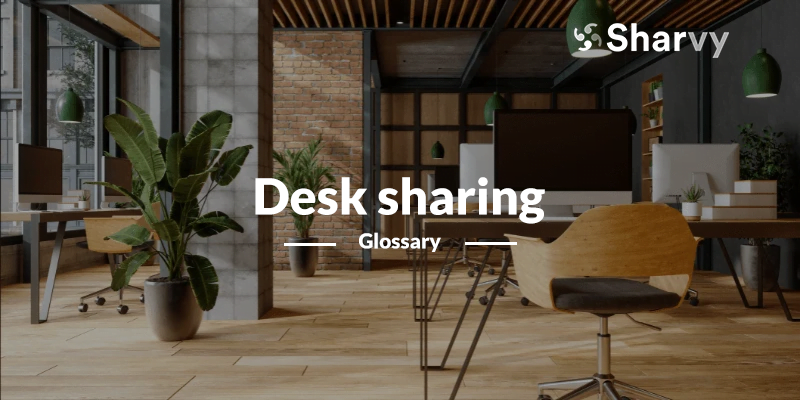What is desk sharing? – Definition
As its name indicates, desk sharing promotes workstation sharing within the company, most often in open spaces (open space).
As a result, employees no longer have their own offices and are now free to move around wherever they wish each morning. While startups may be credited with the origin of this kind of practice, today, even more, developed companies and organizations are increasingly opting for desk sharing to foster innovation and collaboration within their teams.
Desk sharing is a trend that has developed rapidly in recent years : how can it be explained?
Several factors can explain it. On the one hand, following the Covid-19 crisis, we can observe a change in working methods. But on the other hand, the mobility of employees and the flexibility of work have increased ; in correlation, they are less and less present in the company and at a fixed workstation. In particular, following the democratization of telecommuting for one or two days a week, which has gradually become the norm in companies.
At the same time, there is a growing digitalization of processes. For example, employees make more and more appointments via videoconference, and nowadays, they can more easily work in a “nomadic” way since most documents and procedures are computerized.
As a result of these phenomena, the need to optimize workspaces to offset the increase in real estate prices and square meters was increasingly felt by companies.
Therefore, desk sharing has definite advantages for companies, especially in reducing costs and rationalizing the number of workspaces.
What are the advantages of desk sharing?
On the employee side, desk sharing fosters team spirit and reduces information asymmetry. All the employees are mixed in a more flexible organization mode and more focused on exchange and cohesion. This allows for better emulation and simplifies the sharing of skills between departments.
In this configuration, and as a knock-on effect, greater team creativity is born since employees work more easily hand in hand. At the same time, it increases the commitment and productivity of employees since this work organization provides more flexibility, and each person is free to choose their workspace according to their needs or mood.
For companies, the implementation of desk sharing allows cost savings, due first to the furniture but also to optimizing the workspaces since the number of offices is rationalized. At the same time, this new organization can create momentum among ambassadors.
As a result, well-being at work increases, and your employees talk about it around them. In correlation, this can encourage new talent within the teams since the organizational flexibility and flexibility granted to employees is attractive.
Are there any risks in opting for desk sharing?
Of course, the risks are not zero. Desk sharing almost necessarily takes the open-space format. It, therefore, has the main disadvantages: loss of reference points for certain employees, a lack of concentration if the quieter areas are quickly taken over, a lack of privacy inherent to open space, which can cause discomfort among certain employees, etc.
This is why, to ensure that this new organization will run smoothly and that no one will feel aggrieved, its implementation must be carefully thought out.
Do you want to know the best practices for a successful transition to desk sharing ? Check out this article !

